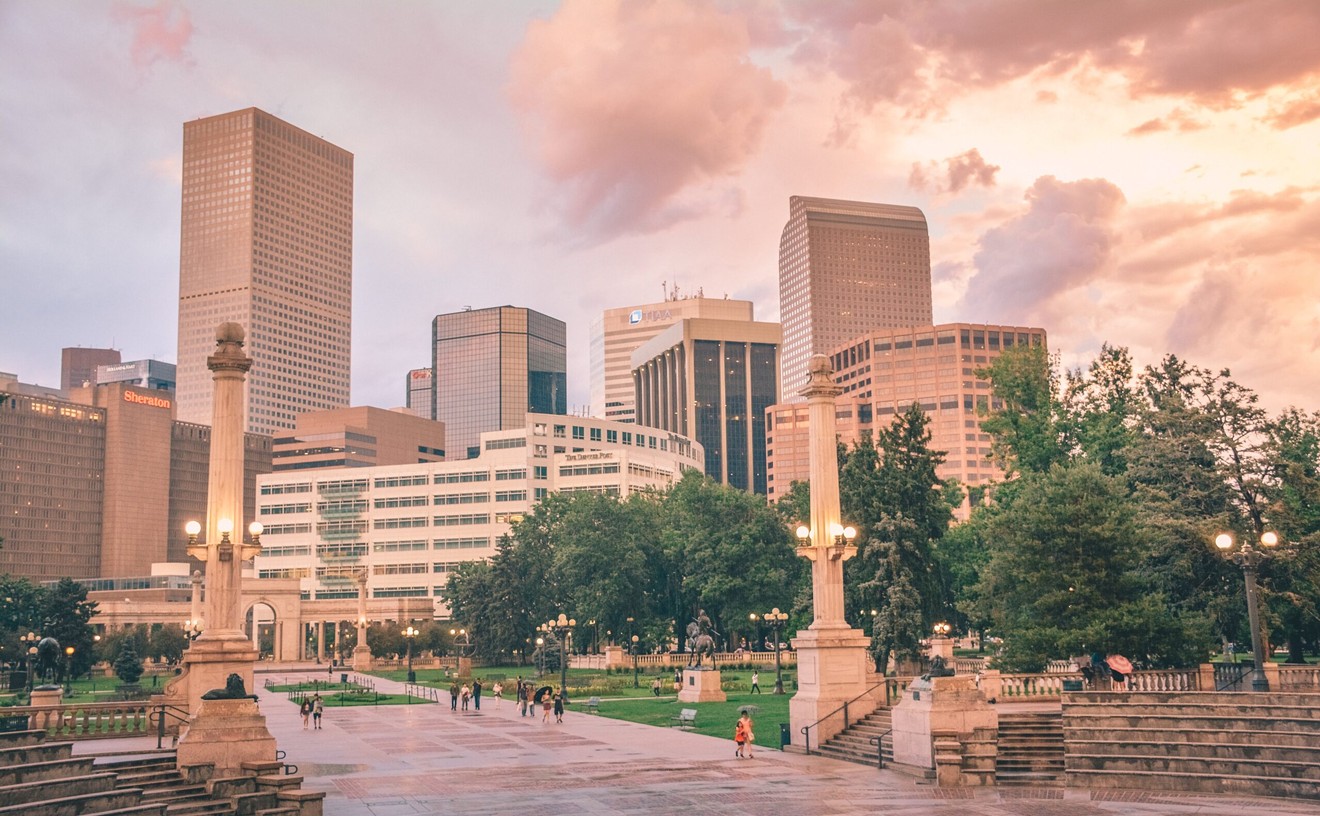The first phase of work on the BRT will take place Monday to Friday for the next four to six weeks from 7 a.m. to 5 p.m. — weather permitting — on several sections of East Colfax Avenue between Broadway and Williams Street.
According to the Denver Department of Transportation and Infrastructure (DOTI), the BRT will be an upgrade over the current 15 and 15L bus lines. With it comes faster and more frequent bus service, which will run from the Anschutz Medical Campus to downtown Denver. The BRT line will bring a bus around to each stop every four to five minutes, DOTI estimates, while the 15 and 15L each currently take half an hour to arrive.
RTD has seen a steady decline in ridership since 2019, but DOTI data shows that the 15 and 15L have the highest ridership of all RTD bus routes, serving 20,000 people a day.
The BRT is expected to see around 31 percent more riders, about 6,000 per day, than the 15 and 15 L lines combined by 2040. Still, some residents who live near the new bus line are on edge about traffic safety along parallel roads.
Residents who live near East 13th, 14th, 16th, 17th and 18th avenues in neighborhoods like Capitol Hill and Congress Park have told city leaders they're worried that BRT will make those avenues and their neighborhoods more dangerous.
According to DOTI, those roads already have problems with dangerous drivers: Nearly 2,400 crashes happened on those five corridors from 2018 to 2022, city data shows, and more than 500 of them have resulted in death or injury. About 86 of the crashes involved a pedestrian or bicyclist.
"I'm tremendously worried about traffic," says Dennis Royer, a retired Park Hill resident who was a transportation engineer for fifty years. "13th and 14th [avenue residents] have been complaining for years about accidents and speed."
Royer worries that with the closure of two lanes in both directions of East Colfax Avenue, buses making frequent stops, and the construction leading up to BRT, drivers won't stand slower speeds. He believes motorists will then look for other routes to go east and west through town.
Denis Moynihan, who has lived a block from East Colfax Avenue for a decade, has been voicing concerns about the traffic impact of the BRT for months.
Royer worries that with the closure of two lanes in both directions of East Colfax Avenue, buses making frequent stops, and the construction leading up to BRT, drivers won't stand slower speeds. He believes motorists will then look for other routes to go east and west through town.
Denis Moynihan, who has lived a block from East Colfax Avenue for a decade, has been voicing concerns about the traffic impact of the BRT for months.
"It's going to drive more high-speed traffic onto adjacent avenues and streets, into the neighborhoods," Moynihan told Westword in August. "These streets are already dangerous thoroughfares for pedestrians, cyclists, children, pets, wildlife — anything that happens to be there."
A 2023 traffic study by Fehr & Peer, an engineering consulting firm advising DOTI on BRT, estimated that about three to five cars will be diverted onto those streets per minute once the transit line is running, owing to factors like the westbound traffic on East Colfax Avenue being slowed down by nine minutes. The study did not have an estimate of diverted cars during construction.

Amy Ford, the executive director of the Department of Transportation and Infrastructure, toasted the groundbreaking of the Bus Rapid Transit on Friday, October 4. She says DOTI is still studying how much nearby residential roads will be impacted.
Bennito L. Kelty
Other issues like BRT stations shortening turn lanes and parking cars slowing down traffic more because of reduced lanes are "all a discouragement to traffic being on Colfax," Royer says.
"The neighbors are not going to see what's going to happen until, all of a sudden, the traffic is on 13th, 14th, 17th and 18th [avenues]."
DOTI spokeswoman Nancy Kuhn acknowledges the matter of "localized traffic diversion onto parallel arterial streets," but says that the increase in bus ridership will take cars off the road and reduce accidents on both Colfax and its parallel streets.
"Building BRT will reduce the overall amount of vehicle travel in the city and study area compared to not building BRT," she says. "This is because BRT will create fast and reliable bus travel times for bus riders now and into the future."
On top of that, the Fehr & Peer study recommends that the city get ahead of increased traffic by increasing red light time on those streets and extending no-parking zones to make it easier to see pedestrians crossing the street.
Amy Ford, the executive director of DOTI, calls concerns about traffic diversion "fair," and says her department is still trying to determine and analyze risks. A parallel corridor street study by DOTI was completed last week, according to Ford, who confirms that 13th and 14th avenues will have "ancillary impacts," but promises that DOTI is "looking into all of that right now.
"There was really careful analysis about what the impacts would be as we bring in the BRT," she says. "We'll always consider what the impact is to communities and others.
"The investment that we're able to do in infrastructure and mobility is an investment for the entire city," Ford continues. "It provides choice in how people travel; it provides investment in the [Colfax] corridor, an extraordinary corridor; it adds to the vibrancy of businesses on the corridor."
The BRT's first phase of construction takes place in City Council District 10, which includes Congress Park, West and South City Park, Cheesman Park, most of Capitol Hill, Civic Center, the Central Business District and Union Station. District 10 Councilman Chris Hinds has been hearing the concerns about diverted traffic at community meetings, telling his constituents that BRT "will have a minimal impact to adjacent streets."
"I've heard the concern," he says. "13th and 14th are already a mess. We can't widen 13th or 14th, so the best way to keep more crashes from happening is to change the urban design."
Denver's population grew by more than 100,000 between 2010 and 2020, according to Census Bureau data, and Hinds doesn't think the 15 and 15L lines can accommodate more population growth.
"We're limited. With our current system, we can only transport so many people," he says. "If you think it's hard now getting around the city, it'll be worse if we don't provide an alternative to cars."
"We're limited. With our current system, we can only transport so many people," he says. "If you think it's hard now getting around the city, it'll be worse if we don't provide an alternative to cars."
Hinds knows that opposition to the project lingers despite groundbreaking celebrations last week. However, he compares current opposition to pushback against Denver International Airport's location when it was moved from Central Park (then Stapleton) in 1995.
"To move the Stapleton Airport to the middle of nowhere, at the time people were like, 'This is a terrible idea,'" the councilman says. "The city leaders did it anyway, and now we have the third-busiest airport in the country."













